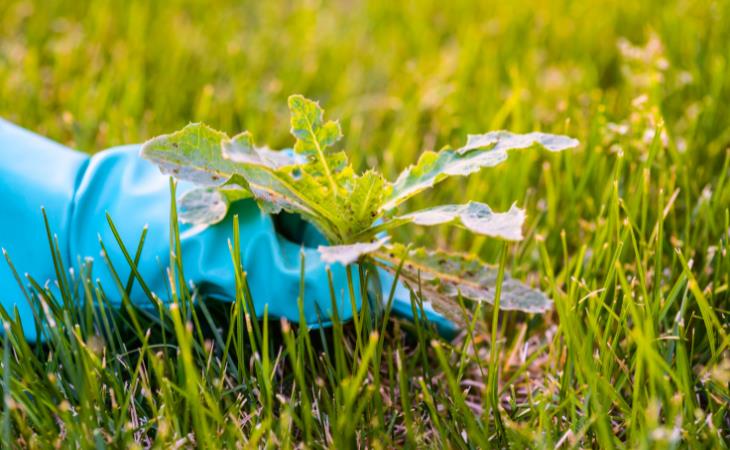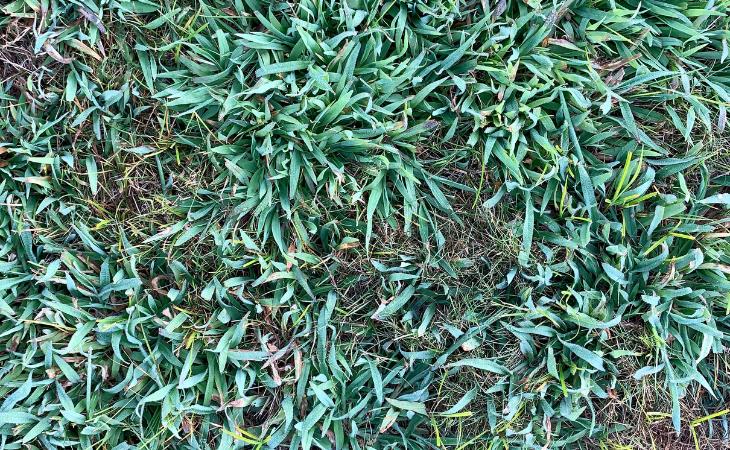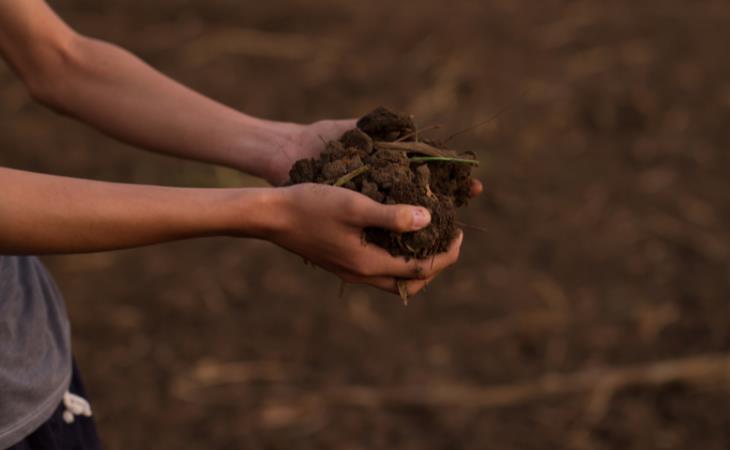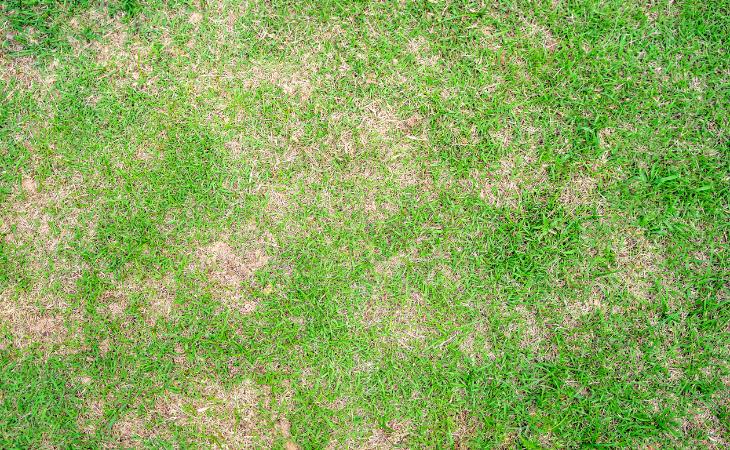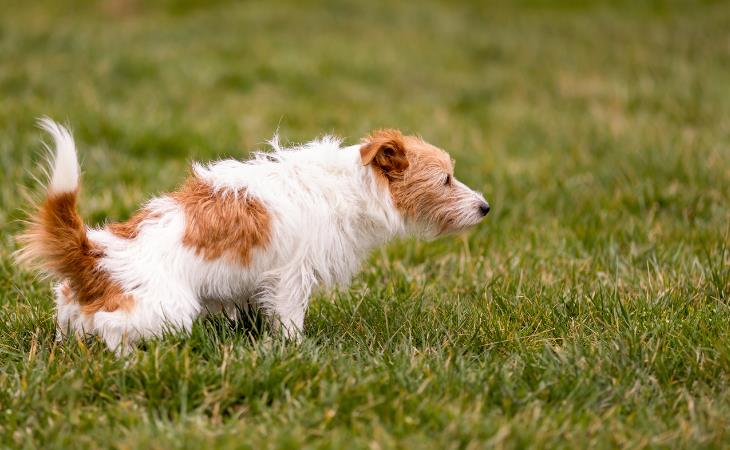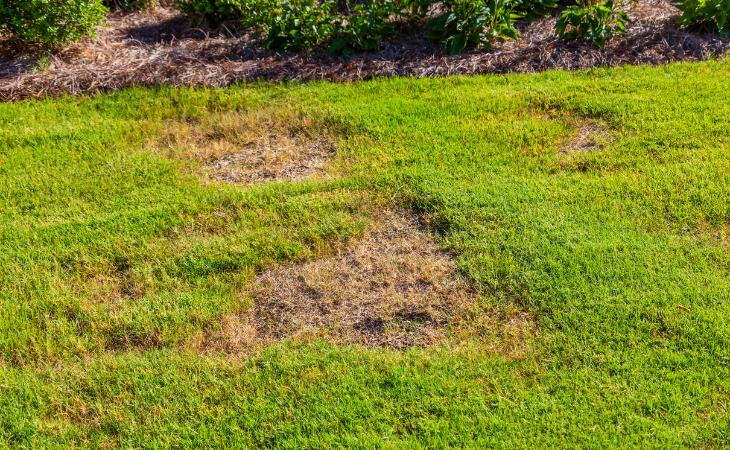We all want our grass to be the greenest, brightest and most beautiful, but there are quite a few difficulties and problems on the way to achieving this goal. It can be very frustrating if you don't understand why the grass turns yellow or brown, or why it doesn't grow as it should, but luckily for you we have prepared the following guide for you, where you will discover 8 common problems in gardens and lawns and how they can be treated. After you finish going through them all, you are guaranteed that your grass will be the greenest on the street!
1. Brown areas
Brown areas can form for a variety of reasons, including caterpillars feeding on grass roots, Rhizoctonia fungus that thrives in warm areas in the late summer months, organic matter that has accumulated in excessive amounts in the soil, poor soil quality, or even animal urine. To identify the problem you must examine the resulting brown area and see if you can find one of these factors in it. Specifically - rhizoctonia is usually formed in the form of a circle, as you can see in the picture.
How to handle the problem:
As mentioned, you must deal with each problem individually, for example by exterminating caterpillars (detailed explanation below), using a fertilizer that is suitable for the grass according to the appropriate instructions, etc. You must get rid of the diseased grass so that it does not spread (if it is a disease) and sow new seeds - preferably in fresh, new soil.
2. Weeds in the grass
Weed moths eventually end up in every lawn, no matter how well you keep your garden manicured. If they are not taken care of, they can take over the entire lawn and take over the nutrients that should reach the grass, which will cause it to wither and lose its vitality.
How to handle the problem:
It's easier to pull weeds when they're young, but be aware that you have to do it from the root, which means you'll have to dig a little into the ground. On the other hand, you can apply selective herbicides that are intended for weeds and that are not harmful to the grass.
3. Finger-Grasses
In lawns that are not mowed regularly and that do not receive the required fertilizer for the grass, a finger may develop, which is a type of invasive plant in lawns that is very difficult to get rid of, especially in clay soil. The trick is to get rid of this plant in time, since it is an annual and grows mainly in the spring and summer months.
How to handle the problem:
Cornmeal is the substance that can help you get rid of the fingernails, and it is better to spread it on the grass already at the beginning of spring. However, it is highly recommended to consult a professional gardener on this matter, since you may miss the perfect time to spread the pollen. Your window of time is only about 10 days, therefore you must do it at the right timing, and it is better to combine this treatment with organic gorse that will help prevent the sunlight from reaching the seeds of the thimble.
4. Compacted soil under the grass
Overly compacted soil is a serious problem in lawns that is easy to ignore and think there is another problem in its presence. No matter how much you prepare the grass for planting, eventually the soil beneath it will harden, and this happens mainly because of the feet that walk on the grass and press the soil into itself. As a result, there will be poor air and water circulation within the soil, which will mean that the grass will not be able to get the nutrients it needs through its roots optimally, and it will also increase the chances of weeds appearing.
How to handle the problem:
You should aerate the soil with an aerator and a grass thinner, then reseed the grass, with as many seeds as possible in areas that tend to be more desolate when the grass is growing. To see even better results, incorporate compost into the soil - when the organisms in the soil break down the natural compounds in the compost, the soil will aerate by itself.
5. Lawn Rust
Almost every home lawn is vulnerable to lawn rust - a plant disease that causes brown areas in the grass, especially in the summer months. The symptoms are separate and numerous areas of grass in an orange or yellow-brown color, a kind of rust color, hence the name of the disease. This usually happens when the nitrogen level in the soil is low or because the moisture level is high, which over time weakens the grass.
How to handle the problem:
You should use a nitrogen-enriched fertilizer that will protect your lawn from lawn-rust and improve its overall health and strength. In cases of severe infestation, it may actually be a fungus that is causing the problem, and the grass must be exterminated to get rid of it.
6. Animal urine
Urine of dogs and cats contains very high levels of nitrogen and salts, and although the grass needs nitrogen, it is not at the same level as that found in the urine of animals. The areas where the animals tend to defecate will turn yellow mainly under heavy heat and during drought.
How to handle the problem:
The first thing you can do is keep the animals away from your garden, but this will not help to treat what has already happened. To restore the grass, you must dig in the infected area to a depth of several centimeters, add a layer of airy soil (about 0.5-1 cm), re-sow and water a lot. It is also recommended to add fertilizer to the soil in the same area to encourage healthier growth of the grass.
7. Pests in the grass
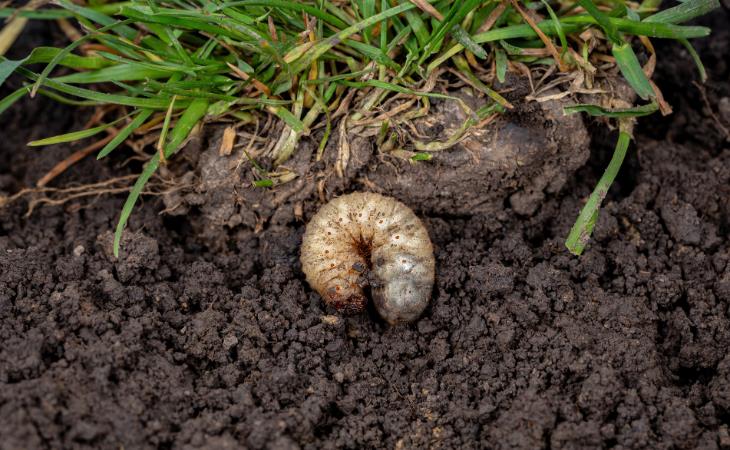
Beetle larvae are a common problem in lawns, as they feed on the roots of plants that are underground, causing the grass to turn yellow and brown and eventually die. The most obvious sign of such an infestation is grass rings or plants that are next to the grass and that are also damaged, since the insects that feed on the plants in the garden are not picky. To verify if there are caterpillars in the soil of your garden, you can place a damp towel on the grass, leave it there overnight and check if there are caterpillars under it - they are attracted to moisture.
How to handle the problem:
You don't have to exterminate the lawn to get rid of these caterpillars if there don't seem to be any serious signs of a problem with the lawn. If there is a problem, the way to treat it is with the help of biological control that is done with nematodes that feed on them. The nematodes must be introduced into the soil in the fall or spring, and then they must be allowed to settle in it for several days before sowing new grass. Chemical control will probably not be effective against caterpillars in the grass, but it can help somewhat as long as they are very young - usually between the months of July and August.
8. Bare Spots
Bare spots can appear for a variety of reasons: walking too much on certain areas of the lawn, caterpillars in the grass, animal urine, lack of nutrients for the grass, fungus development in the grass, chemicals spilled on the grass (like fuel) and more.
How to handle the problem:
You will have to deal with each problem individually, and to restore the lawn it is necessary to water the bare areas well and then sow grass again; You must aerate the existing soil, sow new seeds and cover with fresh soil.


